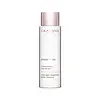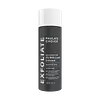What's inside
What's inside
 Key Ingredients
Key Ingredients

No key ingredients
 Benefits
Benefits

 Concerns
Concerns

 Ingredients Side-by-side
Ingredients Side-by-side

Water
Skin ConditioningSorbitan Stearate
EmulsifyingPentylene Glycol
Skin ConditioningGlycerin
HumectantButylene Glycol
HumectantAscorbyl Glucoside
AntioxidantCeteareth-20
CleansingIsononyl Isononanoate
EmollientSqualane
EmollientBoron Nitride
AbsorbentDimethicone
EmollientAcrylates Copolymer
Sodium Citrate
BufferingSodium Hydroxide
BufferingChlorphenesin
AntimicrobialEthylhexylglycerin
Skin ConditioningTetrasodium EDTA
Xanthan Gum
EmulsifyingBiotin
AntiseborrhoeicParfum
MaskingCitric Acid
BufferingMalpighia Emarginata Fruit Extract
Skin ConditioningAlchemilla Vulgaris Extract
AstringentXylitol
HumectantMalpighia Emarginata Seed Extract
Skin ConditioningPancratium Maritimum Extract
BleachingRhodomyrtus Tomentosa Fruit Extract
HumectantWater, Sorbitan Stearate, Pentylene Glycol, Glycerin, Butylene Glycol, Ascorbyl Glucoside, Ceteareth-20, Isononyl Isononanoate, Squalane, Boron Nitride, Dimethicone, Acrylates Copolymer, Sodium Citrate, Sodium Hydroxide, Chlorphenesin, Ethylhexylglycerin, Tetrasodium EDTA, Xanthan Gum, Biotin, Parfum, Citric Acid, Malpighia Emarginata Fruit Extract, Alchemilla Vulgaris Extract, Xylitol, Malpighia Emarginata Seed Extract, Pancratium Maritimum Extract, Rhodomyrtus Tomentosa Fruit Extract
 Reviews
Reviews

Ingredients Explained
These ingredients are found in both products.
Ingredients higher up in an ingredient list are typically present in a larger amount.
Butylene Glycol (or BG) is used within cosmetic products for a few different reasons:
Overall, Butylene Glycol is a safe and well-rounded ingredient that works well with other ingredients.
Though this ingredient works well with most skin types, some people with sensitive skin may experience a reaction such as allergic rashes, closed comedones, or itchiness.
Learn more about Butylene GlycolSodium Hydroxide is also known as lye or caustic soda. It is used to adjust the pH of products; many ingredients require a specific pH to be effective.
In small amounts, sodium hydroxide is considered safe to use. However, large amounts may cause chemical burns due to its high alkaline.
Your skin has a natural pH and acid mantle. This acid mantle helps prevent harmful bacteria from breaking through. The acid mantle also helps keep your skin hydrated.
"Alkaline" refers to a high pH level. A low pH level would be considered acidic.
Learn more about Sodium HydroxideTetrasodium EDTA is the salt formed from neutralizing ethylenediamine tetraacetic acid with sodium hydroxide. It is a chelating agent and used to prevent metal ions from binding to other ingredients. This helps keep the product and ingredients stable.
Tetrasodium EDTA comes as a white solid and is soluble in water.
Water. It's the most common cosmetic ingredient of all. You'll usually see it at the top of ingredient lists, meaning that it makes up the largest part of the product.
So why is it so popular? Water most often acts as a solvent - this means that it helps dissolve other ingredients into the formulation.
You'll also recognize water as that liquid we all need to stay alive. If you see this, drink a glass of water. Stay hydrated!
Learn more about Water